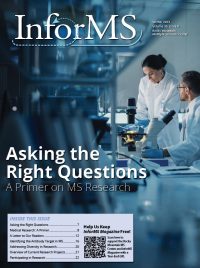
After years of painstaking work in the laboratory, Dr. Jeffrey Bennett and Dr. Gregory Owens at the Rocky Mountain MS Center at the University of Colorado, have identified an antibody target in MS. While additional research will be needed, the identified antibody target could be pivotal in efforts for earlier definitive diagnosis, optimizing treatment, and could pave the way for the development of a tolerizing vaccine to halt the immune process or even prevent MS from developing in certain individuals.
This newly published research is an exciting development in the field of MS research. And it also illustrates the complexity of basic science, translational research, and the time and persistence required for thorough and novel research endeavors. This research also demonstrates how innovative technology, research tools, and knowledge gained from prior studies combine to make key discoveries possible.
What Led to this Research?
Testing cerebrospinal fluid (CSF) for signs of inflammation has long been a major component of the diagnostic assessment of MS.
Over the past 70 years, this spinal fluid analysis has grown increasingly important because, in the spinal fluid of most patients, there was a sign of persistent inflammation that took the form of antibodies called oligoclonal bands.
Many individuals living with MS are familiar with these antibodies because disease modifying therapies target the B cells that make them. Antibodies are secreted by B cells to target specific pathogens that cause infections; but they also may target normal tissue in autoimmune disorders such as MS. Whether you have relapsing forms of MS or progressive disease, antibodies in the spinal fluid persist throughout the course of disease. While detecting these antibodies in the spinal fluid is not specific for MS versus other CNS autoimmune or infectious diseases, they are present in roughly 95% of all MS patients. The target of those antibodies however, was unknown.
Twenty years ago, Dr. Bennett, Dr. Owens, and the late Dr. Don Gilden, all leading researchers at the University of Colorado Anschutz Medical Campus, began looking for the target of MS CSF antibodies. “We were very interested in identifying the target of antibodies in MS because in other forms of infectious neurologic disease where oligoclonal bands are present in the spinal fluid, these antibodies are targeted against the cause of infection,” explained Dr. Bennett. “We began this research with this simple analogy: If we could identify the target of CSF antibodies within the nervous system in MS, it may be able to tell us how the immune system is causing disease.”
The power of knowing the target of antibodies in MS will be multi-layered. First, specific therapies could be designed to block an immune response that was targeting something in the nervous system. If it was an infection, an antibiotic or other therapy designed to clear an infection could be delivered. And if the target of the antibodies was something that belonged to the body – an autoimmune process – an “allergy shot” could be delivered to make the body less reactive against that target.
Research Requires a Mix of Ingenuity, Hard Work, and Persistence
Oligoclonal bands are found primarily in the spinal fluid and don’t readily match up with antibodies found in the blood. A lumbar puncture is used to collect spinal fluid for testing in MS diagnostics. However, for this study, conducting frequent lumbar punctures was not an option, as no patient wants to have repeated spinal taps.
Instead, Dr. Owens developed a novel system to look at the cells that were likely responsible for making antibodies within the spinal fluid: the B cells that secrete antibodies called plasma blasts and plasma cells. He used a technology called a fluorescent activated cell sorting (FACS), a very sophisticated instrument capable of sorting out specific cell types from any mixture of cells within a complex liquid such as cerebrospinal fluid.
“We used a cell sorting technique called FACS to recover single cells — one by one — from the spinal fluid of MS patients into a dish,” explained Dr. Owens, “Within each cell, we looked at the nucleic acids (RNAs) that are being formed into proteins. Each RNA displays the code for making the single antibody that one plasma blast cell is designed to make. Using this process, we could identify the antibody sequences of almost every single B cell within that spinal fluid sample.”
One of the first things we learned was that many of the techniques typically used around the world to identify targets of antibodies didn’t work in this disease.
— Dr. Gregory Owens
During an immune response, B cells successfully targeting a specific protein will typically divide and expand into antibody-secreting plasma blasts or plasma cells, a process termed clonal expansion. By individually isolating and sequencing MS CSF plasma cells, Owens and his team could then compare the cells’ antibody sequences and identify those B cell populations that have undergone clonal expansion.
Researchers were then able to reproduce an inexhaustible supply of individual MS patient CSF antibodies representing the patients’ oligoclonal bands in the laboratory using the sequences identified in the expanded MS CSF plasma blast clones. However, determining the target of these antibodies proved to be more difficult than anticipated.
“One of the first things we learned was that many of the techniques typically used around the world to identify targets of antibodies didn’t work in this disease,” said Owens. “We knew that it wasn’t only the sequence of the protein that was important, but also the distinct shape or conformation the protein made.”
Bennett and Owens built upon experience from their prior work in cloning antibodies against the aquaporin-4 water channel in another neuro-inflammatory disease, neuromyelitis optica (NMO). “We used antibodies derived from the B cells in NMO spinal fluid to prove in animal models that they were causative of disease,” explains Dr. Bennett. “Equipped with that knowledge, we used this same process to show that MS spinal fluid antibodies were not a marker of disease but could induce damage in animal brains that looks like MS.”
To apply this technology to MS, they not only had to identify classes of antibody targets, but then also examine the thousands of things a cell is making on its surface and hone down to identify the exact target. First, they identified classes of oligoclonal antibodies based upon their binding properties to mouse and human brain tissue. They next focused their examination on antibodies that bound specifically to myelin, the fatty substance that surrounds nerve fibers and is damaged during the course of disease in MS. By adding the myelin-specific antibodies to slice cultures of brain tissue or by directly injecting them into the brain of mice, they could reproduce the demyelination characteristic of MS.
Because they knew the antibodies bound to something on the surface of myelin and that the targets on the surface of myelin were relatively limited, they found that one of the abundant proteins on the surface of myelin, proteolipid protein 1 (PLP1), was a target in this surface complex. However, antibody binding to this target was complicated, and robust antibody binding required other myelin-enriched molecules such as the glycolipid, sulfatide, and cholesterol to be present. They further demonstrated that in animal models that lacked the myelin protein PLP1, they could not cause MS-like CNS demyelination. This confirmed they had identified a specific target for some MS CSF antibodies that could bind to a myelin protein complex and along with the complement system, destroy the myelin sheath and myelin producing cells. “We were able to show that not only had we identified an antibody target, but when we added complement, these MS-patient derived antibodies caused MS-like lesions in the brain in the animal model of MS,” said Bennett, “We now had a target and we were able to induce MS-like damage. Therefore, we knew it was more than just a marker.” The next question was to determine how common was this target across the spectrum of MS patients? The researchers utilized the Rocky Mountain MS Center’s Biorepository to develop an assay to test spinal fluid and serum samples from 80 MS patients at all phases of the disease – samples from patients with clinically isolated syndrome, newly diagnosed patients, relapsing remitting patients, and progressive MS patients. And they also tested spinal fluid samples from 80 patients who had other inflammatory and non-inflammatory neurological diseases to explore how specific this antibody is to MS.
Bennett and Owens found that in the spinal fluid of 80 MS patients and 80 controls, upwards of 60% of all MS patients have this antibody. The antibody was not present in any of the inflammatory or non-inflammatory controls. They had identified a very specific antibody that was concentrated to the central nervous system of most MS patients. “We found the spinal fluid antibody in all phases of the disease, from the very first attack, to patients who had progressive or other relapsing forms of disease,” said Bennett. “We now have a very specific biomarker for MS.”
What’s Next? Many Questions Remain and Potential Opportunities Abound
Further investigations are now needed to build upon this groundbreaking work. The findings need validation from other groups around the world and in other populations of MS, especially since we know that MS is not a homogenous disease. And we know that many neurological diseases look like each other. For example, NMO and myelin oligodendrocyte glycoprotein antibody-associated disease (MOGAD) both used to be called MS.
Now that we have what we think is the first bona fide target in MS, there are lots of exciting things to discover down the line.
— Dr. Jeffrey Bennett
“This research and potential advancements require the effort of the community. The first step at this point, as always with science, is for other people to reproduce it. And, hopefully, colleagues will reproduce the system that we’ve developed,” says Bennett. “We have colleagues collaborating with us to deliver samples to test from very well-defined MS patients at multiple phases of disease to look at how the presence or absence of antibody is related to disease activity. We can also go back to the brains of patients that are in the Rocky Mountain MS Center’s Tissue Bank and examine how this antibody shows itself within different lesions in the MS brain.”
“It’s important to look at patients who are positive for this antibody and ask key questions,” explained Bennett, “What do these patients look like compared to other patients? Do we see this antibody in children or only in adults with MS? Do these patients respond to certain types of therapies or not? And do patients who have this antibody have aggressive disease? If they don’t have the antibody, do they have milder disease?”
Additional research is also needed to explore how this marker fits in with other diagnostic factors in MS. MS diagnostic criteria require individuals to have certain patterns or numbers of lesions in their brain to make the diagnosis. And they must have evidence of damage to the central nervous system that is disseminated in time and space. This means showing that damage has occurred at different dates and to different parts of the central nervous system. If someone doesn’t meet space criteria or time criteria but has an attack and has this antibody, is that paramount? Could this antibody help doctors make an earlier definitive diagnosis?
Could certain therapies be developed for those that have this antibody that can block it to stop disease without needing an immunosuppressive therapy? Can patients eventually be given what would essentially be an allergy (toleration) shot to make them less reactive? Could we cure the disease in groups of patients who have this antibody?
“Now that we have what we think is the first bona fide target in MS, there are lots of exciting things to discover down the line,” says Bennett, “We have the opportunity to understand how the presence and abundance of antibody may relate to MS disease activity, and then ultimately optimize the most effective treatment approaches for these patients.”
MS involves a lot of silent damage, which is why a key priority is recognizing and treating it early. This research connects meaningfully with the Rocky Mountain MS Center’s RISE MS and DREAMS studies looking at first degree relatives of MS patients to identify the features they have that could determine which individuals are at higher risk of developing MS. This antibody simply may be one of the easiest ways to do that in time, especially if the sensitivity of the assay can be increased to detect it in the blood, not just in spinal fluid.
Having a target like this could not only help us recognize it at the earliest stage, but also develop new treatments. By knowing the target of the immune response, we could potentially design blocking therapies that are not immune suppressive. Those agents could be add-ons to other therapies or used as a stand-alone therapy to avoid making patients more susceptible to infections.
Building on this research could also enable us to understand how this disease gets started and how people could ultimately become susceptible to MS, including the underlying lingering question of what is the link with Epstein-Barr Virus and MS? From there, research could explore specific vaccines that could even work from the new technology used to create the COVID mRNA vaccines. These types of vaccines can select any target and develop an immune response against it. That same RNA technology could potentially be used to immunize someone against MS.
Many questions remain. How can we use this first step to fully understand the complex that is the target of MS spinal fluid antibodies? Can we discover additional members of this target complex beyond PLP1 and thereby expand our diagnostic and therapeutic repertoire?
“That’s the beauty of science,” says Bennett, “There are always more questions.”


 One of the first things we learned was that many of the techniques typically used around the world to identify targets of antibodies didn’t work in this disease.
One of the first things we learned was that many of the techniques typically used around the world to identify targets of antibodies didn’t work in this disease. Now that we have what we think is the first bona fide target in MS, there are lots of exciting things to discover down the line.
Now that we have what we think is the first bona fide target in MS, there are lots of exciting things to discover down the line.



